
Overview
This article presents effective strategies for new customer acquisition in direct-to-consumer (DTC) brands, underscoring the critical role of data-driven approaches and holistic marketing tactics. It delineates various methods such as:
- Conversion rate optimization
- Personalized marketing
- Competitor analysis
This illustrates how these strategies enhance customer engagement, lower acquisition costs, and ultimately drive sustainable growth.
Introduction
In the fiercely competitive landscape of direct-to-consumer (DTC) brands, the quest for new customer acquisition is paramount. With businesses facing escalating advertising costs and evolving consumer behaviors, the implementation of effective strategies is essential for sustainable growth. This article explores ten innovative techniques that not only enhance customer acquisition but also optimize marketing efforts for long-term profitability.
How can DTC brands effectively balance the urgency of attracting new clients with the critical necessity of retaining existing ones, all while navigating the complexities of modern consumer expectations?
Parah Group: Comprehensive Conversion Rate Optimization for Customer Acquisition
Parah Group stands out as a leader in delivering high-velocity Conversion Rate Optimization (CRO) programs specifically designed for direct-to-consumer (DTC) brands. In an environment characterized by rising advertising costs and intensifying market competition, the agency employs data-informed strategies and deep insights into consumer behavior to enhance profitability without incurring additional advertising expenses. Their comprehensive suite of services—including:
- User session recordings
- Competitor analysis
- Conversion copywriting
- Continuous A/B testing
ensures meticulous optimization of every element of a client's marketing strategy for peak conversion potential. This method has resulted in remarkable enhancements in return on investment (ROI) and average order values (AOV) for clients. For instance, a $30M apparel company realized a 35% increase in conversion rates and a 10% uplift in revenue per visitor by redesigning their homepage to showcase social proof and reviews, minimizing unnecessary pop-ups, and fine-tuning product pricing. Likewise, a $15M cleaning product brand witnessed an 80% surge in AOV and a 73% improvement in conversion rates through tactics such as evaluating free shipping thresholds and introducing bundles to encourage larger purchases. These outcomes highlight the effectiveness of Parah Group's methodologies in fostering new customer acquisition and sustainable growth. As Parah Group asserts, 'By focusing on consumer behavior and leveraging analytics, we empower companies to optimize their resources, leading to significant increases in transaction numbers and average order values.
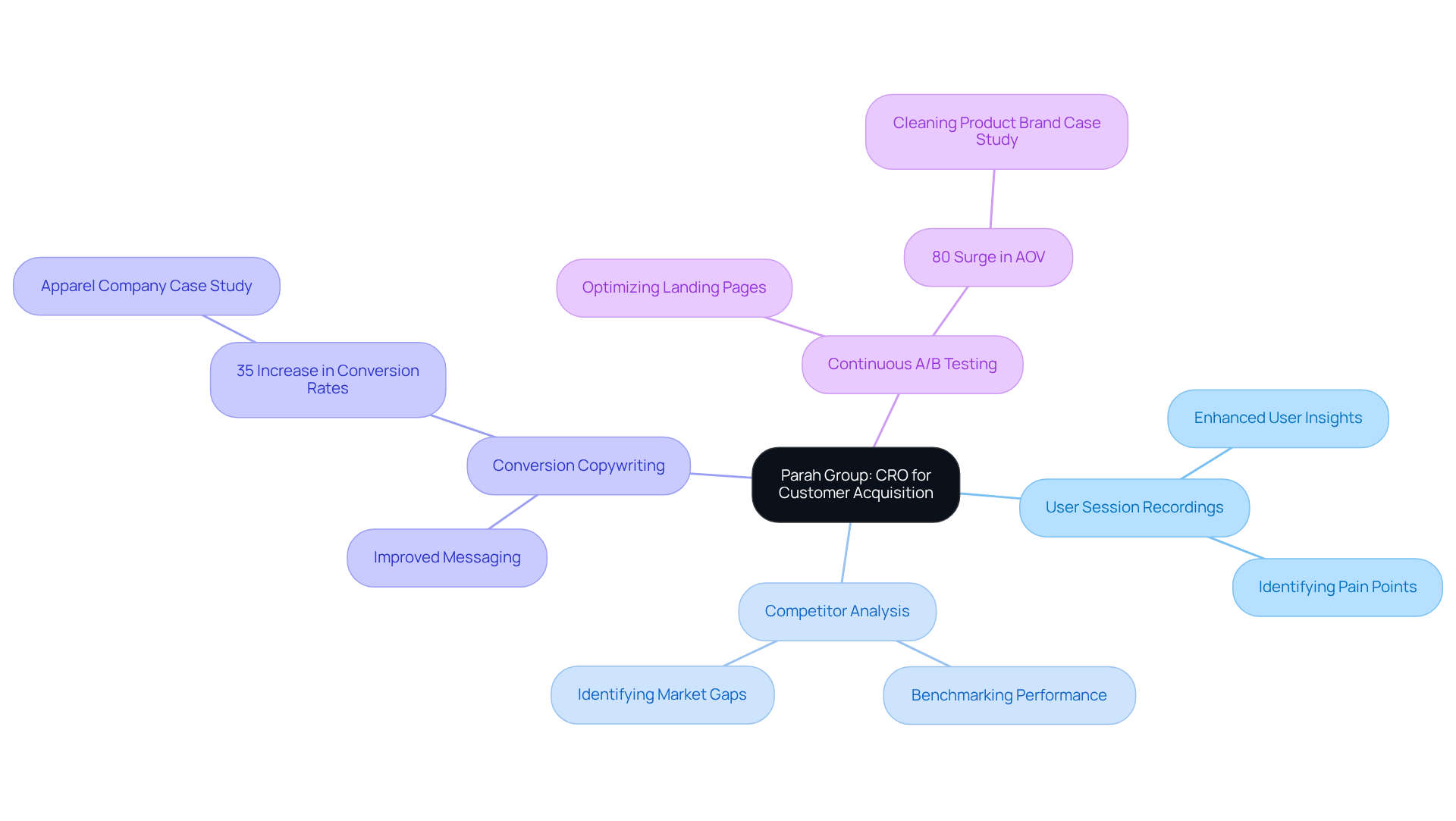
HubSpot: Effective Customer Acquisition Strategies and Measurement
A systematic method for new customer acquisition is essential for DTC companies, a point underscored by industry leaders. This process encompasses attracting prospects as part of new customer acquisition, nurturing them, and ultimately converting them into loyal clients.
An effective evaluation of these strategies is imperative; companies must track key performance indicators (KPIs) such as:
- Customer Acquisition Cost (CAC)
- Customer Lifetime Value (CLV)
to assess their success. Current benchmarks reveal that the average CAC for e-commerce businesses is $70, while B2B companies average $536. Understanding these metrics empowers DTC companies to refine their recruitment strategies focused on new customer acquisition, ensuring they not only attract clients but also retain them for long-term profitability.
Marketing experts assert that an optimal CAC should ideally be significantly lower than the CLV, with a recommended ratio of 3:1 or 4:1. This equilibrium is crucial, as a CAC that exceeds the revenue generated can lead to financial instability.
By leveraging insights from platforms like HubSpot, DTC companies can enhance their client engagement strategies, ultimately driving sustainable growth and profitability.
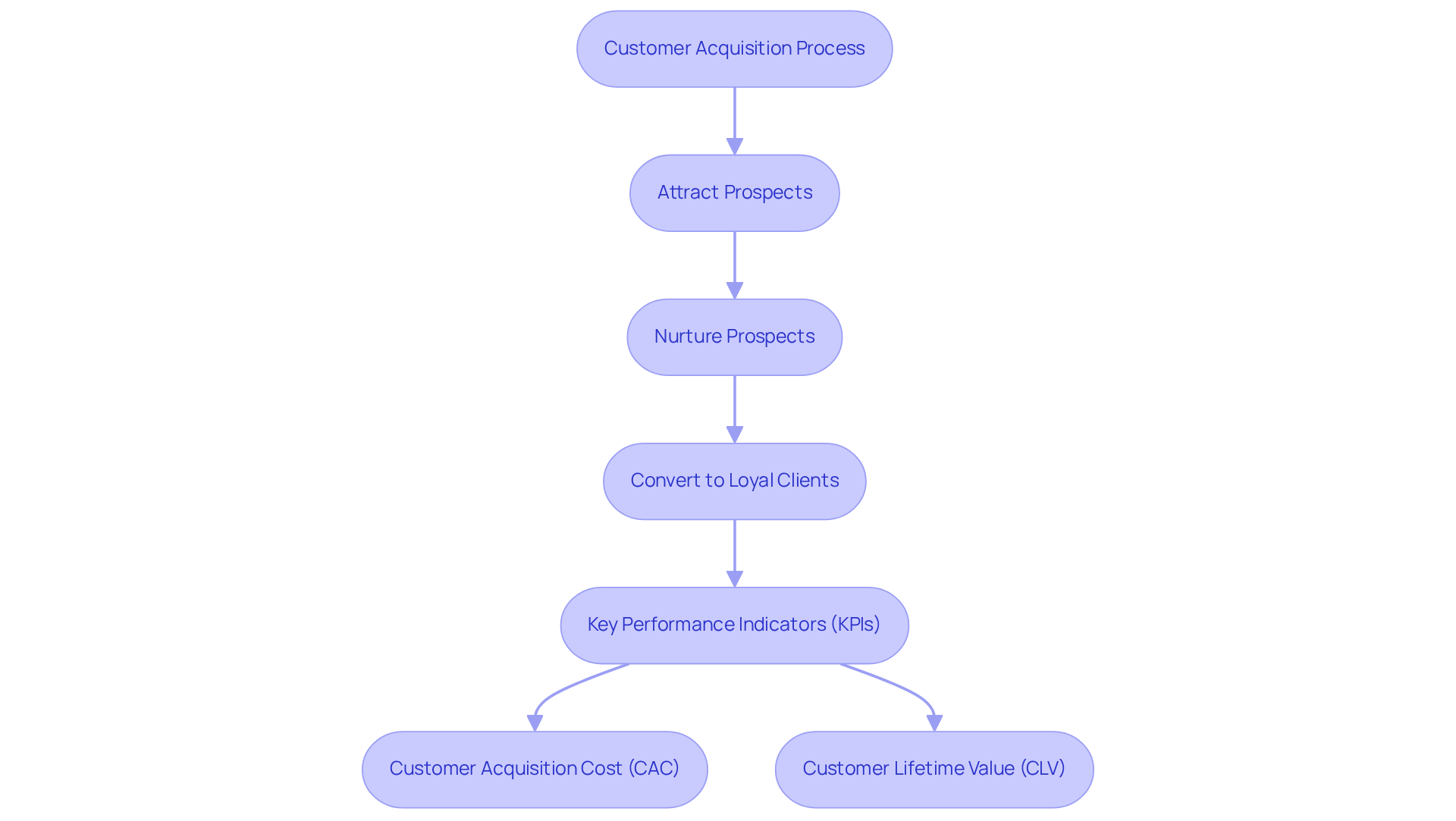
Amplitude: Optimizing Customer Acquisition Cost for Better ROI
DTC companies can significantly enhance their strategies for new customer acquisition by leveraging tools that evaluate client procurement costs and optimize marketing expenditures for improved ROI. By prioritizing first-party data and consumer behavior analytics, brands are able to pinpoint which channels yield the highest returns, thereby refining their strategies effectively.
Maintaining a favorable client onboarding cost (CAC) to lifetime value (CLV) ratio of approximately 1:3 is crucial for sustainable growth. As Jamie Domenici aptly noted, 'Your marketing mix will appear quite distinct in this new world disruption,' underscoring the importance of data-informed strategies in optimizing CAC. This data-driven approach not only helps reduce CAC but also elevates overall marketing efficiency.
Furthermore, with the rise in client onboarding costs, companies must adapt their strategies to remain competitive. A practical recommendation for DTC companies is to regularly assess their marketing channels to identify the most cost-effective methods for new customer acquisition, ensuring resources are allocated strategically to maximize growth potential.
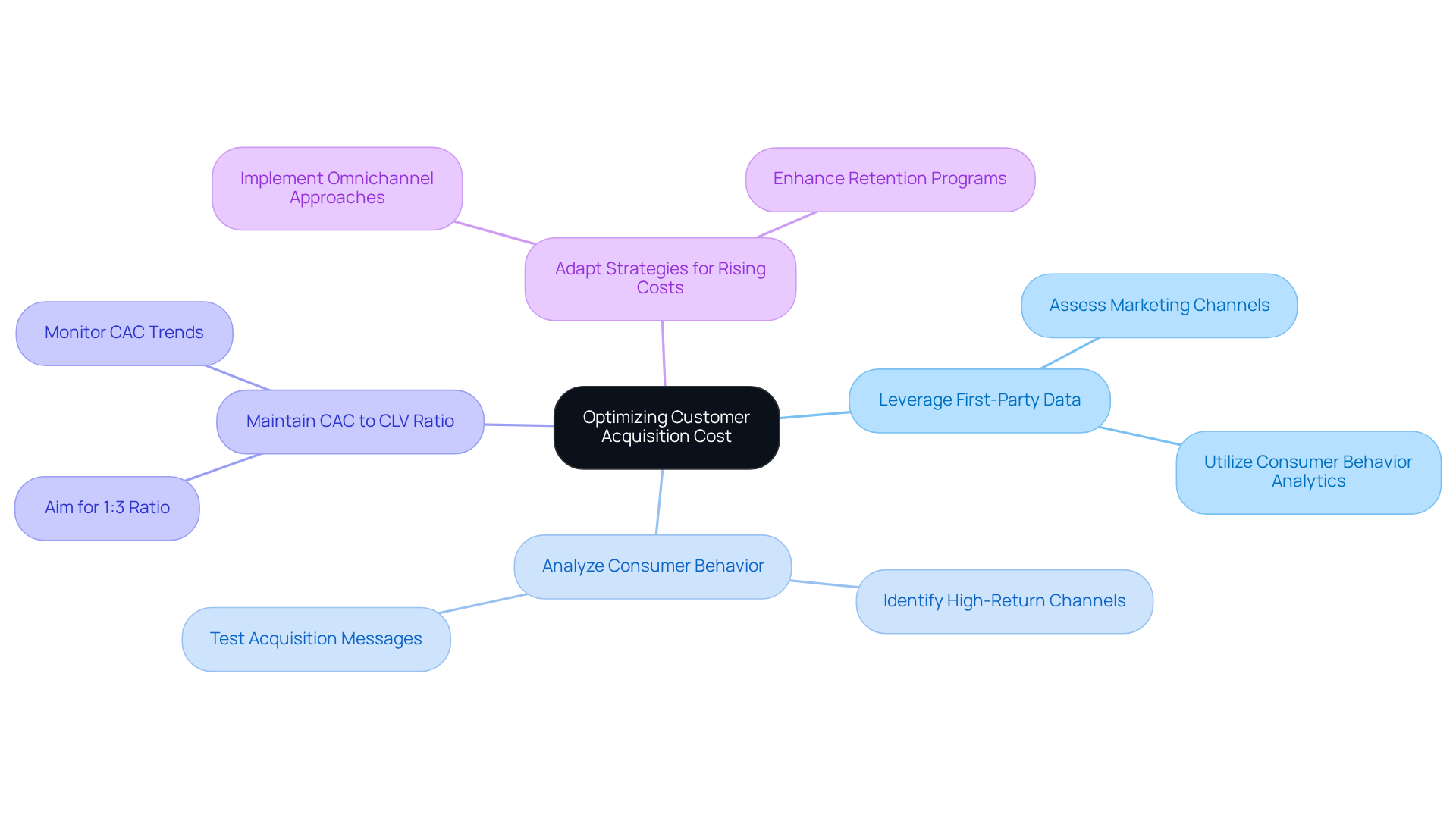
OutboundEngine: Balancing Customer Acquisition and Retention Marketing
OutboundEngine underscores the critical need for DTC brands to balance new customer acquisition with retention marketing. Attracting new customer acquisition is undeniably vital; however, retaining those clients is equally essential for achieving sustainable growth.
By implementing strategies that nurture existing clients through personalized communication and engagement, brands not only enhance loyalty but also significantly increase lifetime value. This dual focus effectively lowers total procurement expenses and fosters a more consistent revenue stream, ultimately contributing to a company's long-term success.
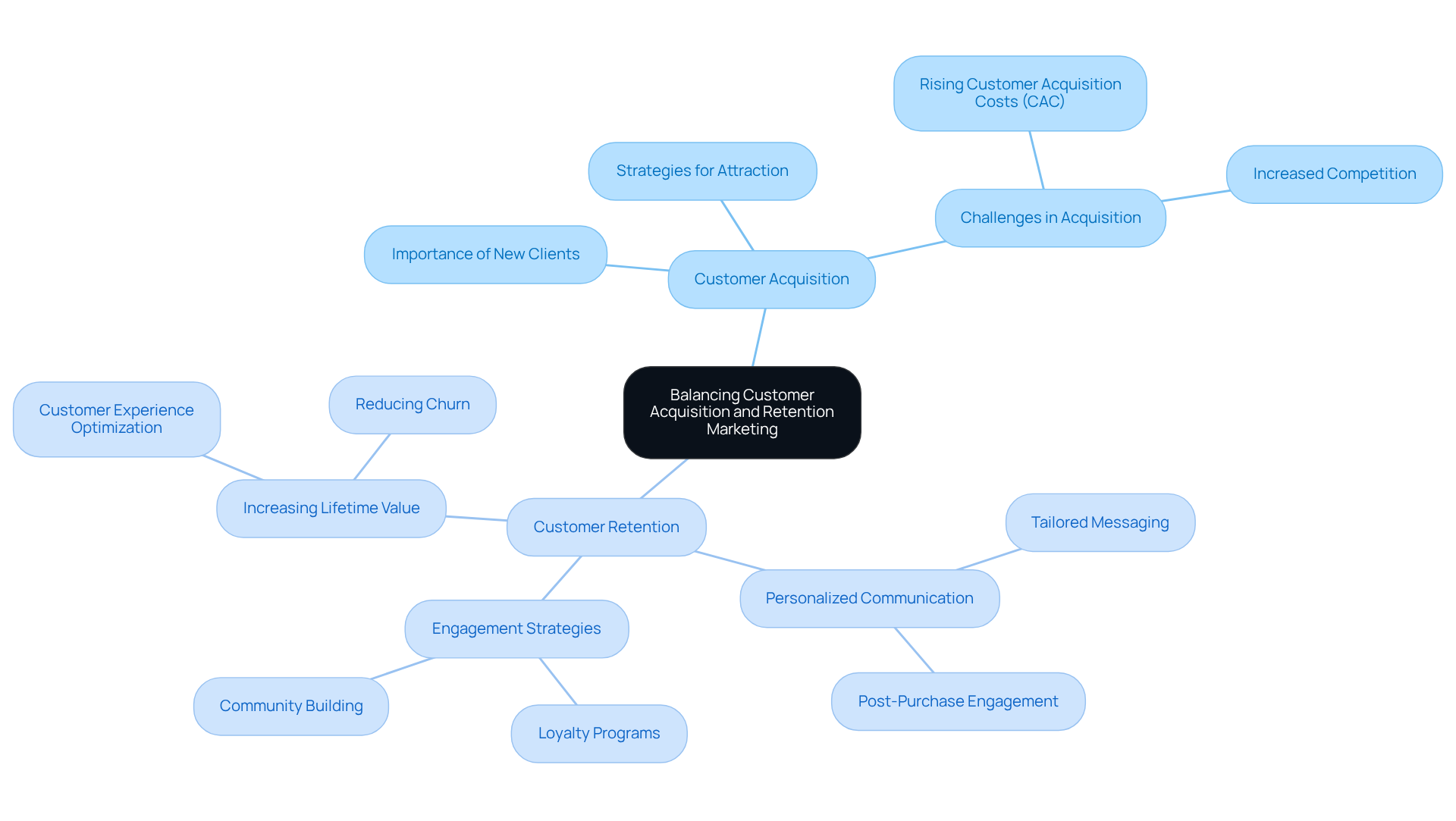
Customer Acquisition Funnel: Identifying Key Touchpoints for Conversion
Mapping the new customer acquisition funnel is crucial for DTC companies, as it involves identifying key touchpoints that guide potential buyers from awareness to conversion. Each stage of the funnel—awareness, consideration, and decision—demands meticulous analysis to uncover potential client drop-off points. Brands can significantly enhance their messaging and user experience at these critical junctures, thereby minimizing friction and maximizing engagement.
Real-world examples underscore the effectiveness of this approach. Companies that have embraced funnel analysis report substantial improvements in conversion rates, greatly aiding new customer acquisition, with some experiencing increases of up to 30% after optimizing touchpoints such as personalized communication during the consideration phase or streamlined checkout processes during the decision stage.
Parah Group, leveraging its extensive experience in Conversion Rate Optimization (CRO), asserts that a comprehensive approach to CRO can markedly enhance these touchpoints. Acting as growth consultants, they assist DTC brands in maximizing existing resources through rigorous testing and data-driven strategies. This holistic approach guarantees that paid ads and landing pages are seamlessly aligned, driving significant growth and higher conversion rates.
As Jeff Bezos aptly noted, "Focusing on the client makes a company more resilient," which highlights the necessity of understanding client needs at every stage. A positive client experience can motivate 89% of consumers to make another purchase, underscoring the importance of creating memorable interactions throughout the journey. By prioritizing these key touchpoints, DTC companies can improve their new customer acquisition, elevate conversion rates, and cultivate long-term loyalty, ultimately leading to increased profitability.
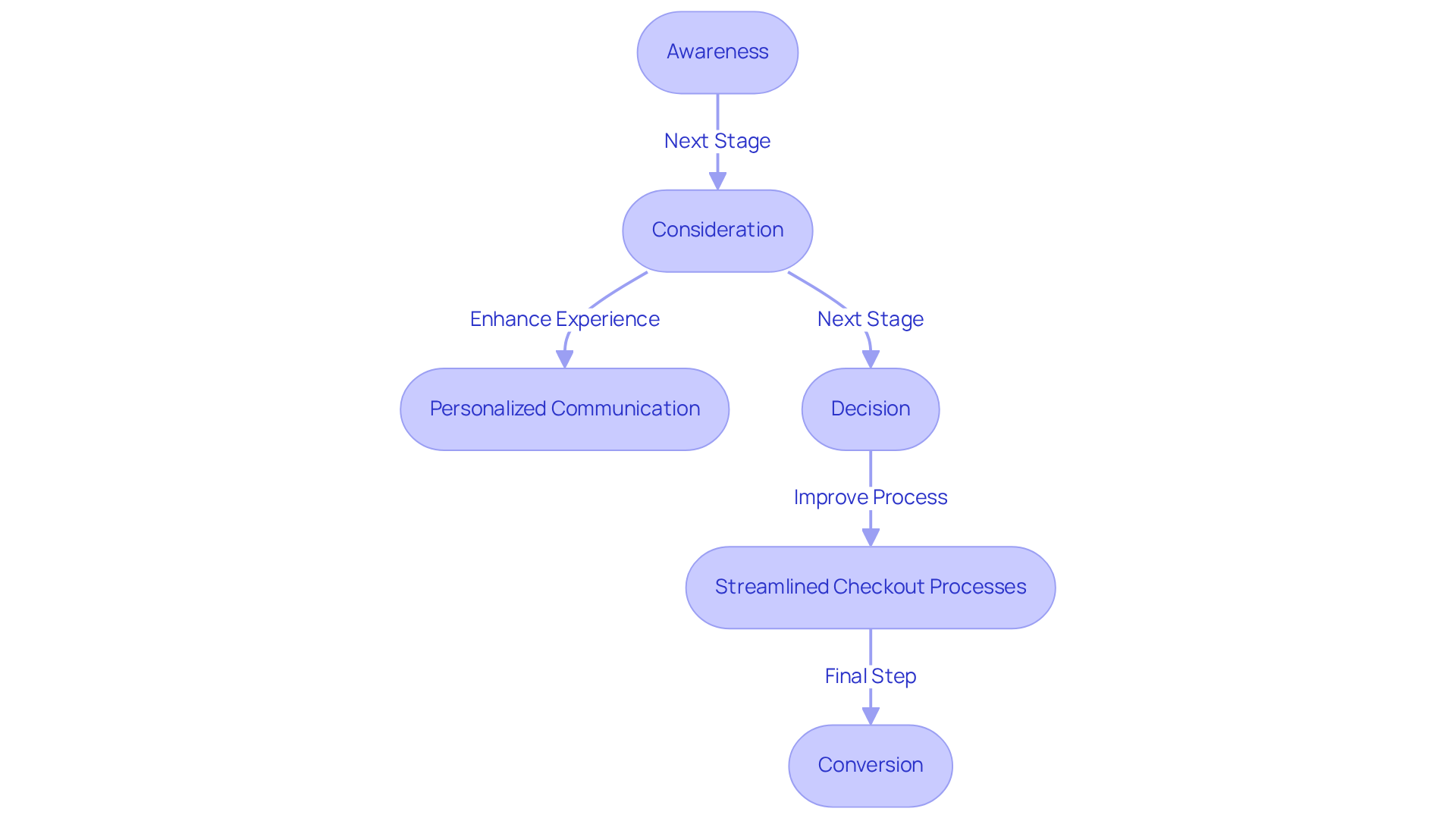
A/B Testing: Refining Customer Acquisition Strategies Through Data
A/B testing stands as a fundamental pillar for optimizing new customer acquisition strategies within direct-to-consumer companies. By experimenting with diverse marketing messages, landing pages, and calls to action, these companies can gather invaluable data on audience preferences. This iterative methodology not only guides decision-making but also significantly elevates user engagement and conversion rates. For example, a $30M apparel company collaborated with Parah Group and achieved a remarkable 35% increase in conversion rates following the implementation of targeted homepage redesigns, the reduction of unnecessary pop-ups, and the gamification of shipping thresholds. This underscores the efficacy of strategic A/B testing.
Current trends reveal that 77% of companies are employing A/B testing on their websites, underscoring its critical role in refining marketing messages to resonate more effectively with consumers. This statistic emphasizes the necessity for DTC companies to adopt A/B testing as a standard practice to maintain competitiveness. As Elcee Vargas from Klaviyo notes, companies must adapt to a challenging environment characterized by rising acquisition costs, making data-informed strategies essential for new customer acquisition and sustainable growth. Moreover, 71% of companies that experienced significant sales increases had tested their landing pages prior to launch, further reinforcing the crucial role of A/B testing in enhancing marketing effectiveness.
Incorporating A/B testing into routine marketing practices allows DTC companies to stay attuned to evolving customer preferences. As Pratyusha Guha from VWO points out, testing enables businesses to discern which elements captivate users, leading to improved marketing strategies that drive results. Additionally, a cannabis company working with Parah Group witnessed a 90% increase in average order value through effective A/B testing, which included strategies such as offering free gifts for orders exceeding a certain cart size and implementing custom landing pages. This further illustrates the potential impact of A/B testing across various industries. By leveraging A/B testing, companies can not only enhance conversion rates but also improve overall marketing effectiveness, ensuring they remain competitive in an ever-changing landscape.
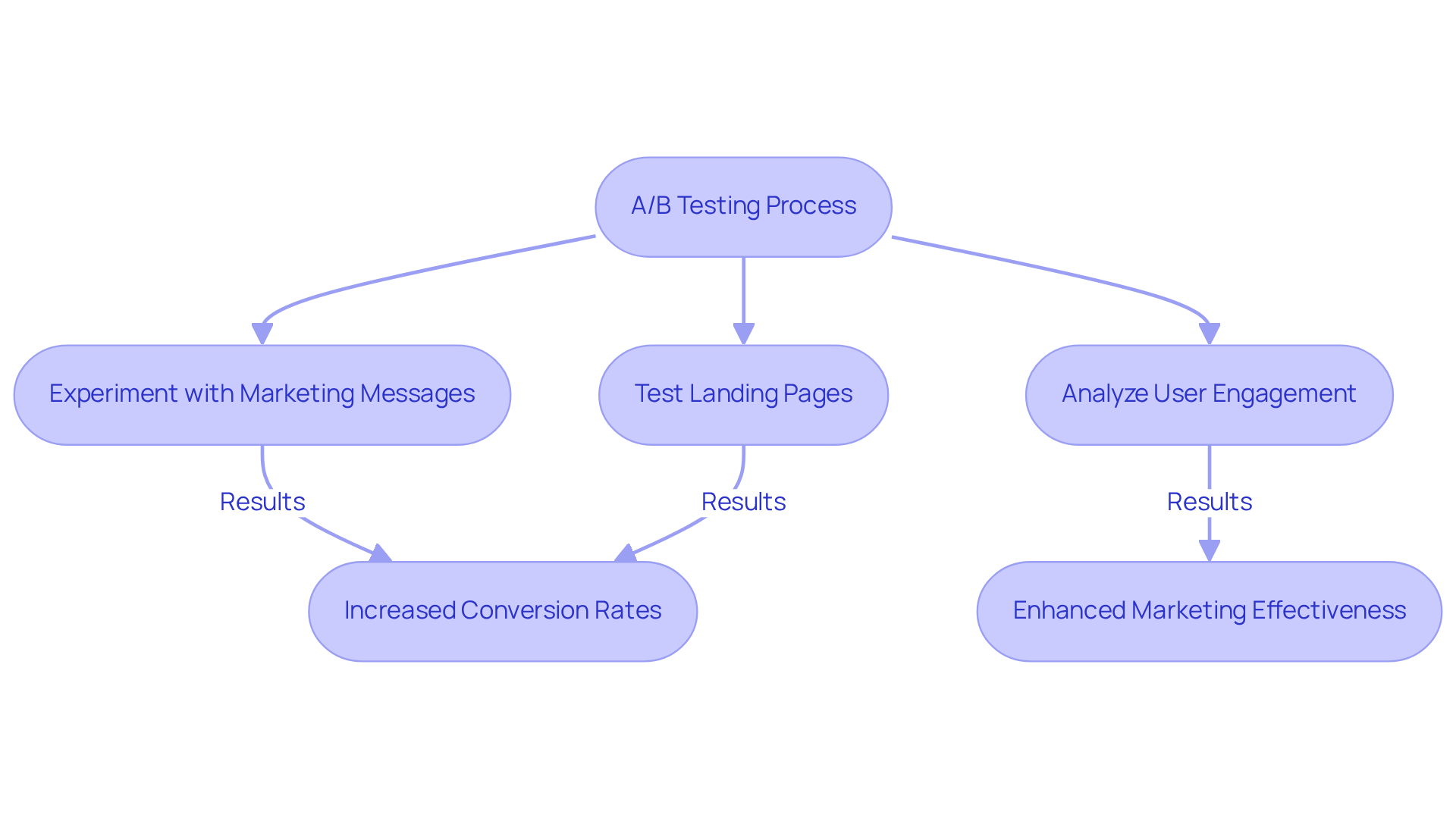
Personalization: Enhancing Customer Acquisition Through Tailored Marketing
Personalization in marketing is crucial for new customer acquisition in direct-to-consumer (DTC) companies. By leveraging data, brands can craft customized experiences that resonate with individual client needs and preferences. This strategy encompasses segmentation and targeted messaging, leading to significant increases in engagement and conversion rates. For instance, personalized shopping cart recommendations have prompted 92% of online shoppers to make purchases, illustrating the effectiveness of tailored marketing strategies.
Moreover, personalization not only elevates the client experience but also cultivates loyalty, making it an indispensable tool for new customer acquisition. Current trends indicate that:
- 80% of consumers are more likely to purchase from companies that provide personalized experiences.
- 71% expect customized interactions.
- 80% of businesses report a rise in consumer spending—averaging 38% more—when their experiences are personalized.
As companies progressively adopt sophisticated personalization techniques, they can improve new customer acquisition by reducing client acquisition costs by up to 50% and increasing revenue by 5% to 15%.
Insights from marketing experts further emphasize the significance of personalization. For example, a European telecom company discovered that customers receiving personalized messages engaged 10% more frequently than those who did not. Eli Stein, a partner at McKinsey’s Bay Area office, observed that:
- 71% of consumers expect companies to deliver personalized interactions.
- 76% express frustration when these do not occur.
This underscores the necessity for DTC companies to prioritize customized marketing strategies to meet evolving consumer expectations and enhance overall performance. Additionally, companies face challenges in delivering personalized experiences, with 43% of respondents citing budget and resource execution as their primary obstacles. Addressing these challenges is vital for maximizing the advantages of personalization.
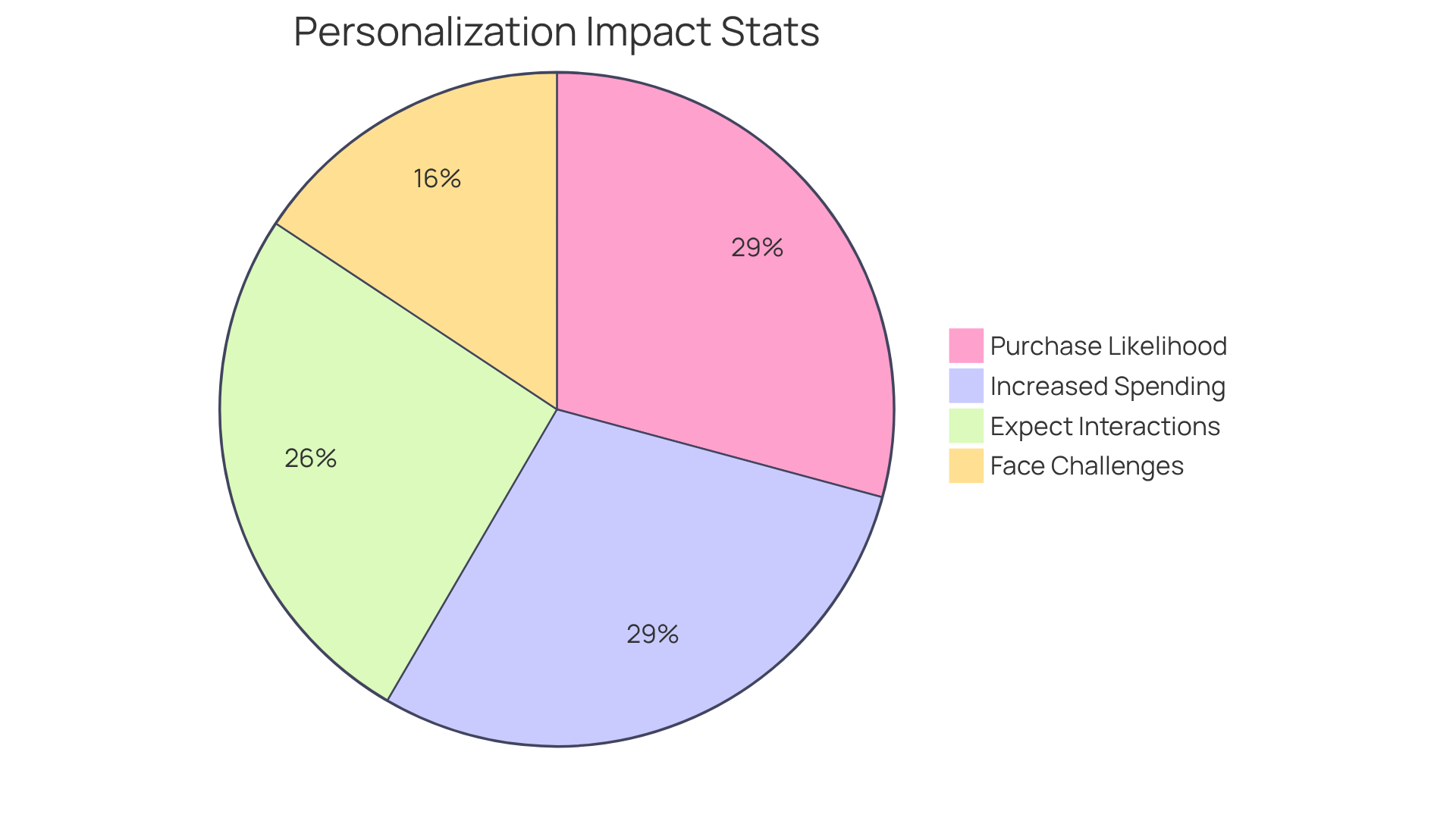
Digital Acquisition Channels: Maximizing Reach Through Social Media and Email
DTC companies can significantly enhance their strategies for new customer acquisition by strategically leveraging digital platforms, particularly social media and email marketing. Social media platforms are not just tools; they are powerful engines for targeted advertising and community engagement. They enable brands to connect with specific demographics, especially millennials and Gen Z, who are increasingly influenced by social media interactions. Notably, 89% of marketers believe that AI is crucial for attracting new clients, underscoring the importance of integrating advanced technologies into social media strategies.
Conversely, email marketing provides a direct line of communication with prospective clients. For every $1 spent on email marketing, an average return of $42 is generated, making it one of the most effective channels for customer acquisition. However, the success of email campaigns depends on crafting compelling content that resonates with the audience. Alarmingly, 32% of consumers read no further than the first one or two sentences of brand emails, highlighting the necessity for engaging subject lines and concise messaging.
Real-world examples further illustrate the effectiveness of these strategies. Brands such as The Honest Company and LOLA have adeptly utilized social media to foster strong communities around their products, driving customer loyalty and repeat purchases. Additionally, the use of storytelling in email campaigns has proven to enhance engagement, as consumers are more likely to connect with companies that share relatable narratives.
By continuously analyzing performance metrics and adapting strategies accordingly, DTC companies can optimize their digital marketing efforts. For instance, 55% of consumers believe that AI simplifies shopping, suggesting that companies should consider integrating AI-driven personalization into their email and social media strategies to improve user experiences and conversion rates. Ultimately, a cohesive strategy that merges the strengths of both social media and email marketing can yield substantial growth in new customer acquisition for DTC companies.
Moreover, Parah Group's proven approach to Conversion Rate Optimization (CRO) emphasizes the critical importance of optimizing landing pages and conducting rigorous A/B testing. By tailoring approaches to align with organizational objectives, Parah Group ensures that every digital interaction is refined for maximum impact. This comprehensive strategy not only focuses on new customer acquisition but also effectively converts these clients, ultimately enhancing profitability and driving long-term success.
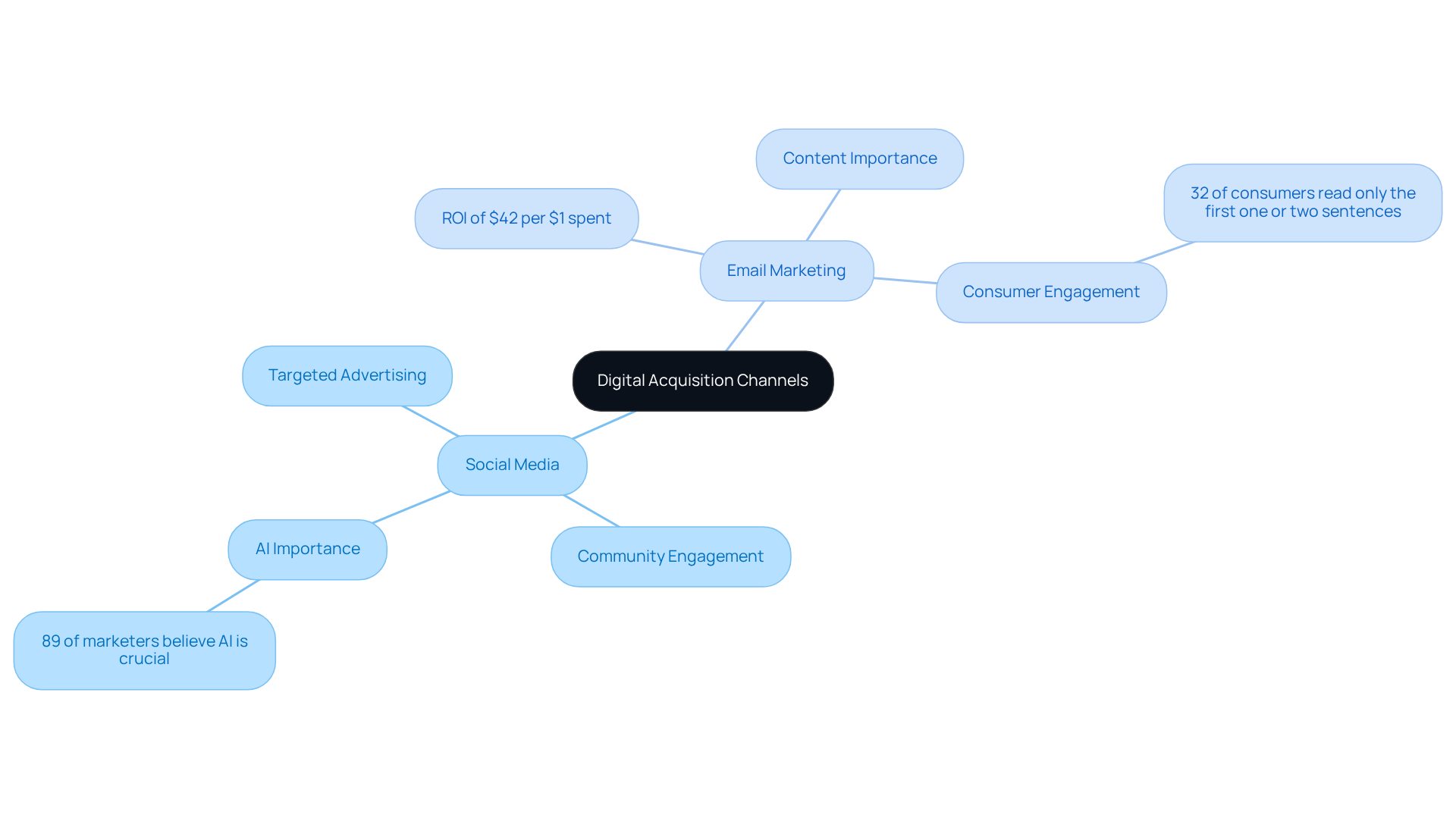
Customer Lifetime Value: Aligning Acquisition Strategies with Long-Term Goals
Customer Lifetime Value (CLV) stands as a pivotal metric for DTC companies, serving as the cornerstone for aligning growth strategies with long-term business objectives. By comprehensively understanding the potential revenue a client can generate throughout their relationship with the company, firms can make informed decisions regarding their investment in new customer acquisition. This focus on CLV not only enhances the effectiveness of onboarding efforts in the short term but also fosters sustainable growth and profitability over time.
As we approach 2025, the emphasis on CLV becomes increasingly pronounced, particularly as rising customer acquisition costs (CAC) compel DTC companies to refine their marketing strategies for new customer acquisition. Research indicates that improving retention by a mere 5% can lead to profit growth ranging from 25% to 95%, underscoring the financial imperative of prioritizing customer relationships. Companies that adeptly implement CLV-centered marketing strategies can significantly bolster their profitability; indeed, those in the top 25% of DTC firms boast lifetime values approximately five times higher than the average.
Real-world examples vividly demonstrate the efficacy of CLV-focused strategies. Companies like Gymshark and Glossier exemplify this approach by leveraging community-building initiatives that not only enhance customer retention but also reduce reliance on paid acquisition. These brands integrate lifecycle marketing processes that encourage customer advocacy through referrals and user-generated content, thereby creating a self-sustaining growth cycle.
As Brandon Warren, Chief Growth Officer, insightfully notes, "Acquisition alone can’t sustain growth - without retention systems in place, the client pipeline leaks faster than it fills." This perspective emphasizes the necessity for DTC companies to regard CLV as a foundational principle within their marketing endeavors, ensuring that every strategy aimed at new customer acquisition aligns with the overarching goal of fostering long-term loyalty and profitability.

Competitor Analysis: Gaining Insights for Effective Customer Acquisition
A comprehensive competitor evaluation is essential for DTC companies seeking to enhance their client engagement strategies. By analyzing competitors' strengths, weaknesses, and marketing tactics, companies can pinpoint opportunities for differentiation and improvement. This analysis reveals valuable insights into customer preferences and market trends, enabling companies to effectively tailor their strategies for new customer acquisition and secure a competitive edge in the marketplace.
Notably, Parah Group has successfully transformed the profitability of various DTC companies through innovative conversion rate optimization (CRO) strategies. For instance:
- A $30M clothing label witnessed a remarkable 35% increase in conversion rates after revamping their homepage to highlight social proof and optimize product pricing.
- In another case, a $15M cleaning product company boosted their average order value by 80% through strategic pricing tests and product bundling.
These compelling case studies underscore how targeted CRO efforts can significantly enhance new customer acquisition and drive revenue growth for DTC brands.
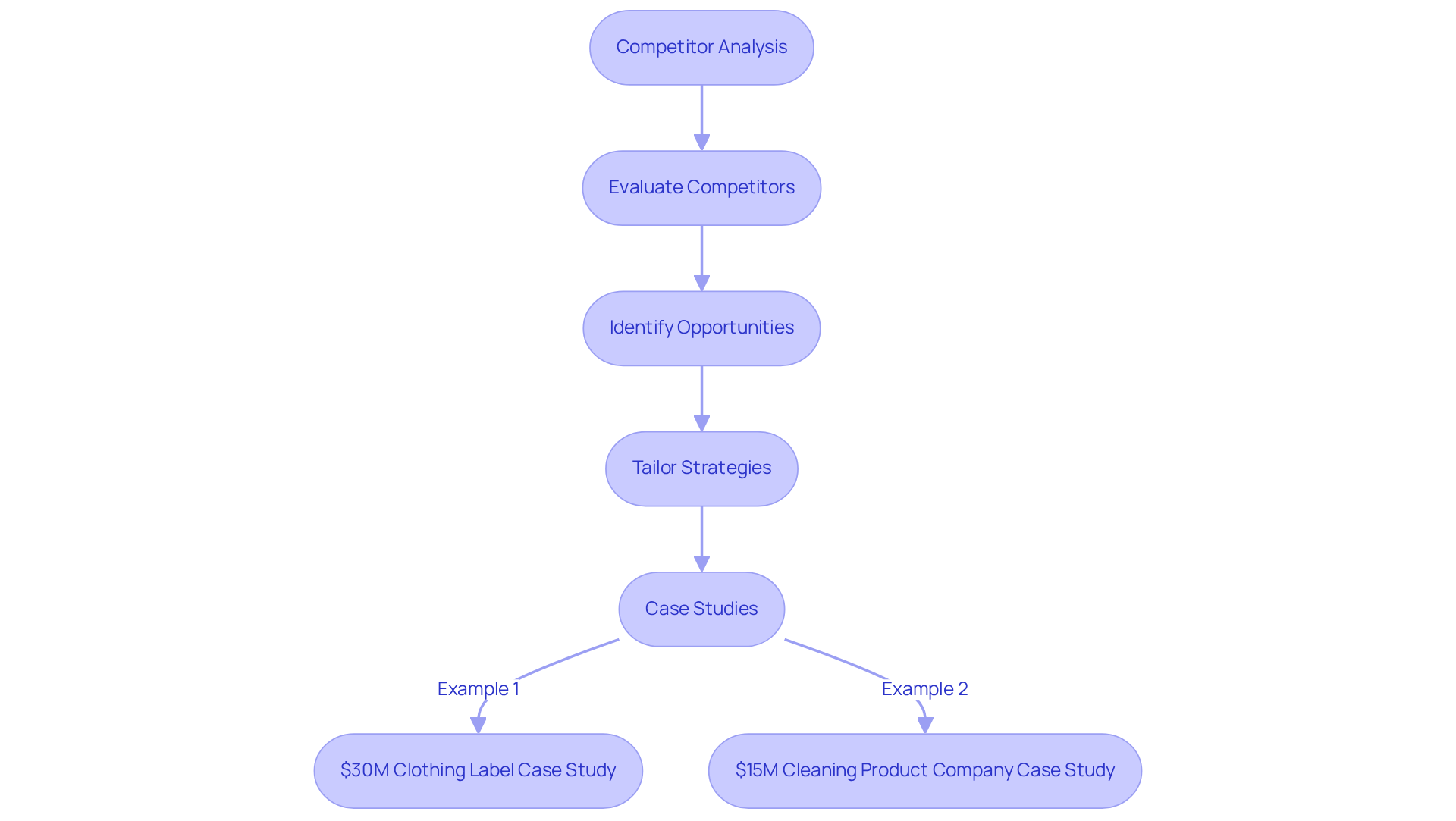
Conclusion
In the competitive landscape of direct-to-consumer (DTC) brands, the significance of effective customer acquisition strategies is paramount. Companies that employ a multifaceted approach—leveraging data-driven insights, personalized marketing, and rigorous testing—are poised to optimize their efforts in attracting and retaining clients. A sustainable growth strategy hinges not only on acquiring new customers but also on nurturing existing relationships to maximize long-term profitability.
This article has explored various strategies, highlighting the importance of conversion rate optimization (CRO), the impact of customer lifetime value (CLV), and the necessity of balancing acquisition with retention marketing. Key insights reveal that understanding customer behavior, leveraging digital channels, and conducting thorough competitor analysis are vital components in refining acquisition tactics. Case studies underscore the tangible benefits of these strategies, showcasing significant improvements in conversion rates and average order values for brands that effectively implement them.
Ultimately, the journey of customer acquisition for DTC brands is an ongoing process that demands adaptation and innovation. As market dynamics evolve, it is crucial for companies to continuously assess their strategies, embrace personalization, and utilize data analytics to maintain a competitive edge. By prioritizing both acquisition and retention, DTC brands can cultivate a loyal customer base, ensuring sustained growth and success in an increasingly challenging environment.
Frequently Asked Questions
What is Parah Group known for in the context of customer acquisition?
Parah Group is recognized as a leader in delivering high-velocity Conversion Rate Optimization (CRO) programs specifically designed for direct-to-consumer (DTC) brands, helping enhance profitability without incurring additional advertising expenses.
What services does Parah Group offer for optimizing conversion rates?
Parah Group offers a comprehensive suite of services including user session recordings, competitor analysis, conversion copywriting, and continuous A/B testing to optimize every element of a client's marketing strategy.
Can you provide examples of the results achieved by clients of Parah Group?
Yes, a $30M apparel company experienced a 35% increase in conversion rates and a 10% uplift in revenue per visitor. Similarly, a $15M cleaning product brand saw an 80% surge in average order value (AOV) and a 73% improvement in conversion rates through various optimization tactics.
What are the key performance indicators (KPIs) that DTC companies should track for customer acquisition?
DTC companies should track Customer Acquisition Cost (CAC) and Customer Lifetime Value (CLV) to evaluate the success of their customer acquisition strategies.
What is the average CAC for e-commerce and B2B companies?
The average CAC for e-commerce businesses is $70, while B2B companies have an average CAC of $536.
What is the recommended CAC to CLV ratio for sustainable growth?
The recommended CAC to CLV ratio for sustainable growth is ideally 3:1 or 4:1, ensuring that the CAC is significantly lower than the revenue generated to maintain financial stability.
How can DTC companies enhance their client engagement strategies?
DTC companies can leverage insights from platforms like HubSpot to enhance their client engagement strategies, ultimately driving sustainable growth and profitability.
What approach should DTC companies take to optimize their customer acquisition costs?
DTC companies should prioritize first-party data and consumer behavior analytics to identify the most effective channels for customer acquisition, maintaining a favorable CAC to CLV ratio of approximately 1:3 for sustainable growth.
Why is it important for companies to regularly assess their marketing channels?
Regularly assessing marketing channels is crucial for identifying the most cost-effective methods for new customer acquisition, allowing companies to strategically allocate resources and maximize growth potential.
FAQs











